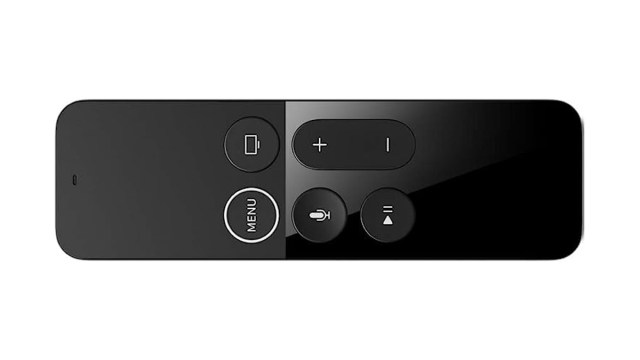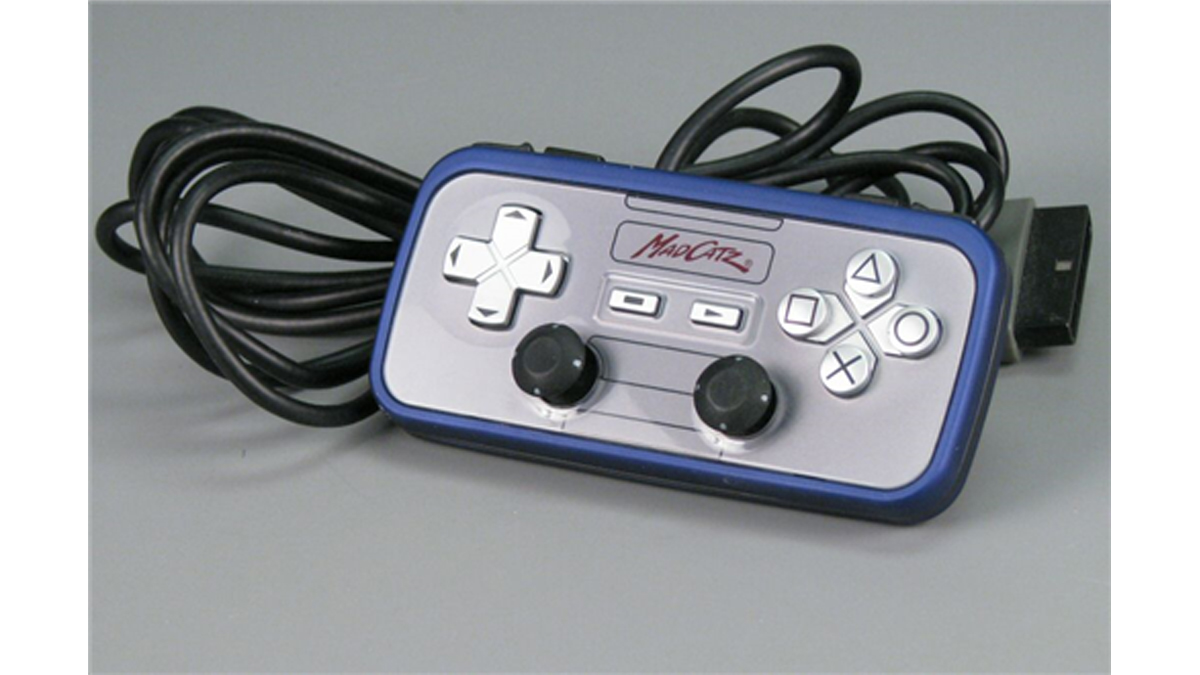Might be the catcher or the controller
We live in arguably the greatest era of gaming controllers. And while I’m sure younger generations will take it all for granted, those of us who’ve been gaming for a few decades know it’s been a long road to get to where we are today. The Switch Pro controller, Xbox Series X|S controller, and PlayStation Dual Sense controller are the best controllers we’ve seen from console manufacturers, both in terms of comfort and usability. And you know that’s the case because basically every third-party controller manufacturer these days is producing devices that more or less look exactly like what you can get from Nintendo, Microsoft, and Sony.
But that hasn’t always been the case. For many years, back when gaming was still thought of as a “kids’ thing,” manufacturers put out the absolute worst controllers the industry has ever seen. Some were gimmicky, and a lot of them were just too cheaply made. For this list of the worst video game controller designs, we’re looking beyond just the strangest oddities that somehow made their way to store shelves and will focus on the controllers that actually made gaming worse. Also, we’re only including controllers we’ve actually used (so you’re safe this time, controller for the View-Master Interactive Vision).

10. Apple TV Siri Remote
Apple is in a good place with gaming right now as its Apple Arcade subscription service continues adding new titles every month. But it wasn’t always like that. Apple has always been at odds with the gaming market, as anyone who tried to play the hottest PC titles of the early 2000s on an eMac could tell you. In 2015, the company added gaming capabilities to the fourth-generation Apple TV, with one catch: games for the service had to be able to use the Apple TV Siri Remote.
For some games, this controller did just fine. You know, games that utilized simple motion controls or trivia games where you just needed a button or two. For everything else it was an uncomfortably light controller to use, one that severely impacted the types of complicated games that could be brought to the platform. Eventually, that requirement was dropped, and the next generation of Siri Remote did not include the accelerometer or gyroscope. Of course, this made the new controller incompatible with all those motion-controlled games. Whoops!
9. The N-Gage
Not just a controller but an entire device, the Nokia N-Gage was doomed to fade into obscurity the moment the company unveiled this “taco phone” to the world. Beyond the mediocre screen and complete misunderstanding as to why people liked the Game Boy Advance, the controls for the device were clunky. Comfort was a big reason why Nintendo succeeded for so long in the handheld arena, and due to its size, it really wasn’t comfortable to hold for that long if you had adult-sized hands. Gaming on phones is much better these days with touchscreen smartphones and dedicated mobile controllers.
8. Atari Jaguar Controller
A perennial favorite of these kinds of lists, I actually understand why Atari decided to include that unnecessary nine-digit keypad. It made sense when you saw the different overlay sheets for the different games that told players exactly what each of those buttons did. As archaic as the concept was, it wasn’t the worst of ideas. What is the worst of ideas is to release this controller, with its three gamepad buttons, in 1993. Do you know what came out more than a year before the Atari Jaguar? Street Fighter II for SNES. The early ‘90s was all about the fighting game scene, both in arcades and a home, and here comes a controller that can’t play any of them. Atari would release the ProController that added more buttons, but it was too little, too late.
7. Tony Hawk Motion Pak
This one kind of feels like a cheat, but Activision shouldn’t be allowed to have this terrible tech-demo-sold-as-a-game fade into obscurity. We all know that motion controls were huge in the second half of the 2000s with the meteoric rise of the Nintendo Wii. But not all games benefited from the technology. Case in point: Tony Hawk Motion. This DS title shipped with the Motion Pak, which forced players to tilt their handheld left and right to steer.
While the motion controls worked okay with some adjustments to the sensitivity, because the quality of the screens on the Nintendo DS wasn’t the best, the moment you titled your device to steer your skater, it became difficult to see what was actually happening on screen. So basically, what you had was a controller that made playing the one game it worked with an exercise in frustration. And yet, it’s somehow not the worst Tony Hawk controller Activision released…
6. Tony Hawk Ride Skateboard
This one is. As a child of the ‘90s, I believe there is a special place in hell for the people at Activision who screwed the Tony Hawk franchise. While the series was arguably on the decline after a robust decade of fun, it certainly hit rock bottom when Tony Hawk: Ride was announced. For whatever reason, Activision thought people wanted to balance on a skateboard while playing games. They did not. The 2009 title was largely a dud, and its sequel, 2010’s Tony Hawk: Shred, certainly put the final nail in the coffin of that idea. While the skateboard itself was well built, Tony Hawk games are designed for precision, and there was nothing fun about having to balance yourself on this board while trying to make the overly accurate movements necessary to pull off even the most basic maneuvers. If you wanted a good boarding game that used a controller you stood on, Shaun White Snowboarding and Shaun White Snowboarding: World Stage made excellent use of the Wii Balance Board.

5. Atari 5200 Controller
The controller for the Atari 2600 is a legendary piece of equipment. The one for its follow-up, the Atari 5200? Not so much. Looking beyond the shoddy quality of the buttons and poor form factor, the Atari 5200 controller featured an analog joystick that didn’t self-center when you took your hand off it. That’s kind of important in a controller. It should be no surprise the 5200 bombed at retail, selling just one million units compared to the 30 million of its predecessor. I’m not sure why this controller design was so hot in the early ’80s, but Intellivision has a similar controller concept that was just as bad.
4. Basically All Third-Party Controls from the ‘90s and 2000s
As I said in the lede, we’re in an excellent era for video game controllers. Manufacturers from all corners of the industry have really upped their game here, and while there are still some misses, you’re generally not going to get a shoddy piece of equipment these days. Wind the clock back 25 years, and it’s a completely different story. There was something about that time period where manufacturers seemed to believe in the concept of “no bad ideas.” How else do you explain controllers like the Intel Wireless Gamepad, the Paradox, the Boomerang 64, or the Palmtop, the controller that took a DDR pad and put it in the palm of your hand? Sure, there were fun experiments, like the Namco NeGcon, but the industry is better off without so much crap for consumers to waste their money on.
3. Power Glove
No list of terrible video game controllers is complete without the Power Glove. Originally released in 1989, the controller was heavily featured in the Super Mario Bros. 3 feature-length commercial, otherwise known as The Wizard. In theory, the glove would allow players to control the actions of their character on screen using hand motions. In practice, well, we were all kids back then, so of course, it wasn’t going to work. Any controller that required you to do programming wasn’t going to go down in history as one of the greats. Plus, for whatever reason, the two games designed explicitly for use with the controller weren’t included with it. You had to buy them separately. We had a Power Glove in our house growing up, but it wasn’t until I started putting this list together that I realized it had its own games. Still, it felt futuristic as hell to put it on and fail at every video game you tried to play with it.
2. Sega Activator
There were several attempts at motion gaming before the Nintendo Wii and Kinect. Like the U-Force, another favorite of lists like these that claimed it could sense hand motions to control a game. I didn’t know anyone who owned a U-Force, but two of my Sega Genesis-owning acquaintances in the ’90s got the Sega Activator for Christmas in 1993. By the spring of 1994, those things were sent to Goodwill. The Activator was an octagonal ring you’d set on the floor and step into. Advertisements made it look like your actions inside the ring would be replicated on screen, specifically in fighting games. However, in reality, players would just throw their hands over the different sides of the octagon to activate that button input. An absolute disappointment all around.

1. 5th and 6th Generation Mad Catz Controllers
It might be a bit unfair to put Mad Catz on this list at number one. After all, the #4 position on this list pretty much covered the era when this company was at its worst. But as we get further and further away from the PS1/PS2 era of gaming, it’s important to keep a record of all the wasted plastic generated by Mad Catz with its fifth and sixth-generation controllers. Because for two console generations, it produced the types of controllers every player dreaded having to use. The designs of their controllers might not have been the craziest, but part of designing a good controller is making sure it’s reliable, and there was nothing reliable about late ’90s/early 2000s Mad Catz. After a few days of use, a lot of their controllers would just start to feel loose. The buttons, the analog sticks; it never felt good to use one of these controllers. When you put one in your hand, you could just feel the inferiority of the product.
And grips. Always with the grips.
Despite the notoriety that went with the brand name, it was likely most everyone you knew in the ‘90s and 2000s who had a gaming console also had a Mad Catz controller tucked away for when they had friends over. That’s just how things were. You’d get the controller that came with the box, but because your younger brother or sister wanted to play too, your parents would drop an additional $30 on whatever Mad Catz they had at Funcoland. It was a stupider time back then, and I’ll never forget trying to play Super Smash Bros. with my friends and being forced to use the Mad Catz Nintendo 64 controller because I lost at rock-paper-scissors.
To its credit, Mad Catz actually managed to turn things around, producing the outstanding instruments of Rock Band 4 and a bevy of great fight sticks, including my favorite, the one for Tatsunoko vs. Capcom. It was even commissioned by Capcom to make fight sticks and fight pads for the then-upcoming Street Fighter IV. Despite the Cinderella story, the company shut down in 2017, only to re-emerge the very next year as Mad Catz Global Limited, where it continues to make fight sticks and PC accessories.








